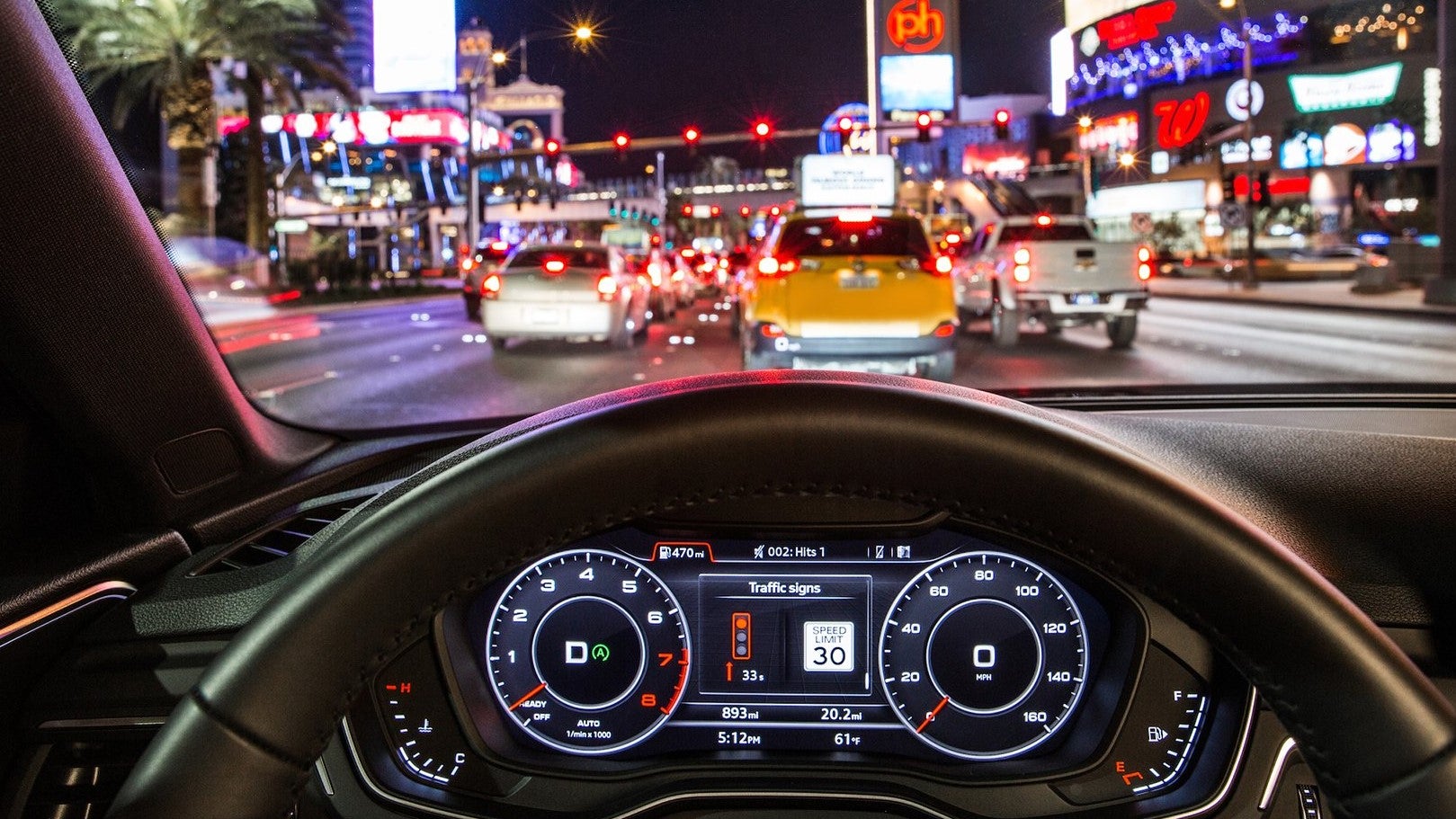
Audi claims to have been first with ‘in-vehicle technology’ called TLI which communicates between vehicles and traffic signals to provide time to green, green light optimised speed advisories and can help drivers minimise stop-and-go driving
TLI is now available at 22,000 intersections in 20 major metros and 60 cities and regions across the US.
Audi also claims the first in-vehicle LTE Wi-Fi hotspot and integrated toll module and plans more such as ‘cellular vehicle-to-everything’.
The automaker introduced TLI in production vehicles in 2016 with just a “handful” of connected signals. Five years on, working with Traffic Technology Services, it has passed 22,000 connected intersections operated by 60 agencies around the US with New York City, Los Angeles and San Francisco added recently.
The green light recommended speed advisories can provide a recommended speed up to the limit to help the driver ride a ‘green wave’.
Both an Audi Travolution report and a US Department of Transportation AERIS Research Program report found minimising stop-and-go driving can lead to more than 15% greater fuel efficiency when drivers are able to respond to predicted traffic signal changes. Audi reckons that is “substantial, given in-vehicle technologies and lightweight materials in vehicles contributing toward efficiency can often have larger cost implications toward next-generation vehicle development compared with tools that help make small adjustments to driving behaviour”.

US Tariffs are shifting - will you react or anticipate?
Don’t let policy changes catch you off guard. Stay proactive with real-time data and expert analysis.
By GlobalDataTLI works through an LTE signal which requires a connectivity subscription. A connected traffic signal communicates to servers that collect data and recognise patterns to make predictions about that signal, and those servers project them back into a vehicle. Machine learning is also able to augment TLI where signal controllers may not be connected. Vehicles only use data from signals found to have a high level of confidence. Signals continue to be added monthly for drivers using TLI.
Initially launched in Portland, Oregon, and Las Vegas, the service has also recently expanded across the US, Canada, and some parts of Europe.
Initial TLI deployment is often focused in larger Audi sales markets.
Last year, the automaker began initial test deployment in Northern Virginia and Alpharetta, Georgia, aimed at refining real-world benefits of the latest vehicle-to-everything connected technology.
Advanced cellular-vehicle-to-everything mobility communications, or C-V2X, leverages existing mobile network infrastructure with direct messages into cars. The aim is to help enhance safety for vulnerable road users, such as road work crews in the Northern Virginia deployment or warnings to drivers as they approach school zones and school buses. Last November, the US Federal Communications Commission reorganized the 5.9 GHz communications spectrum and decided C-V2X was the preferred connected vehicle technology for the US.



